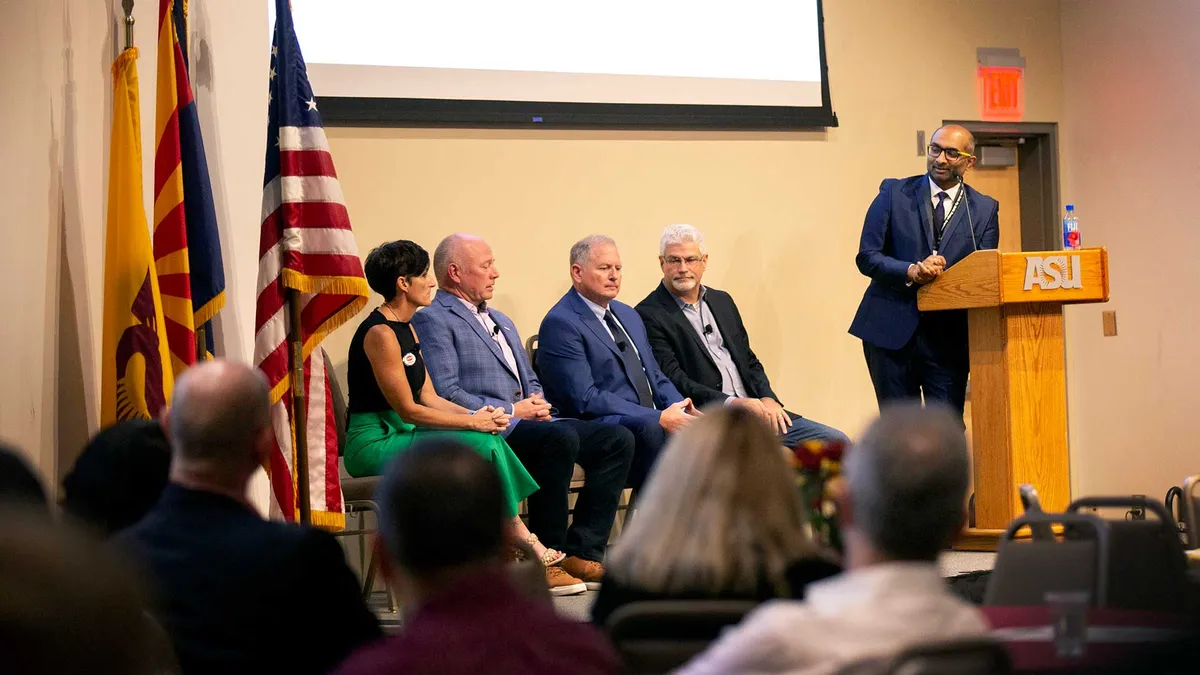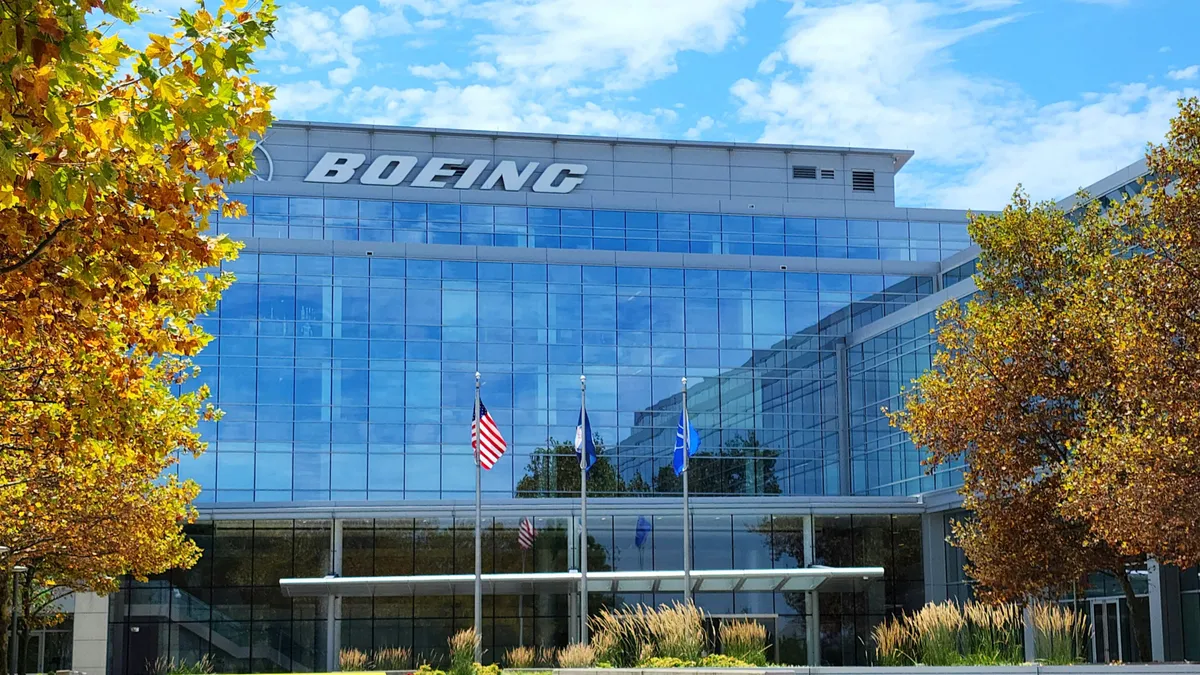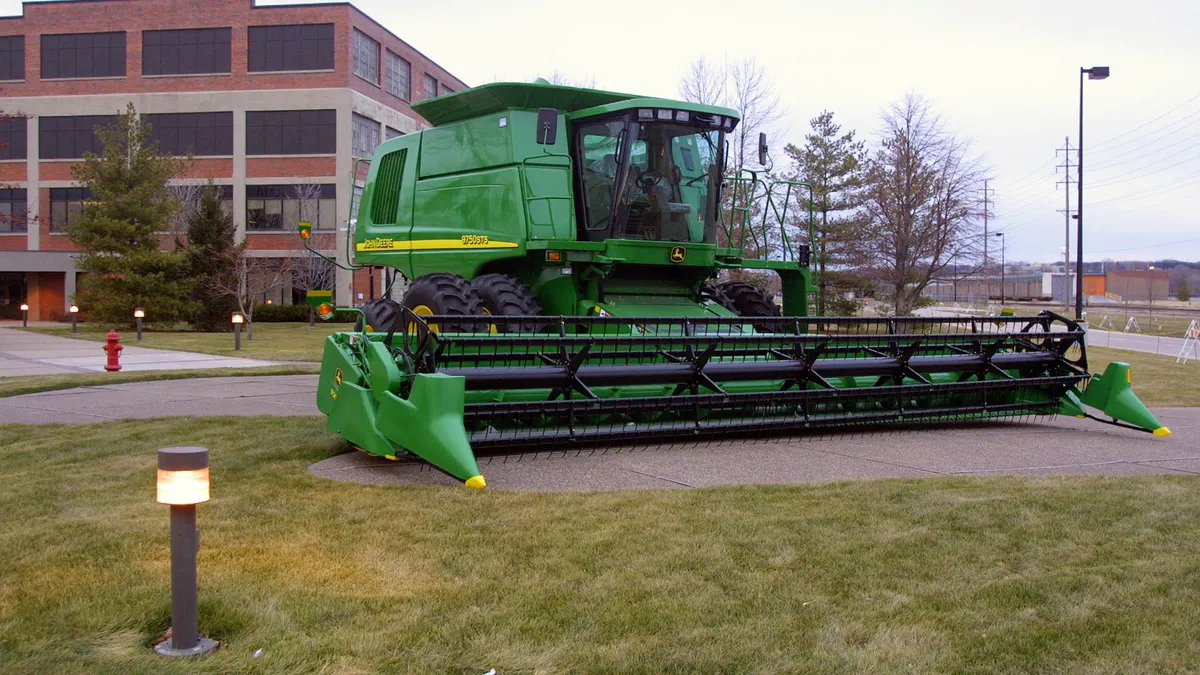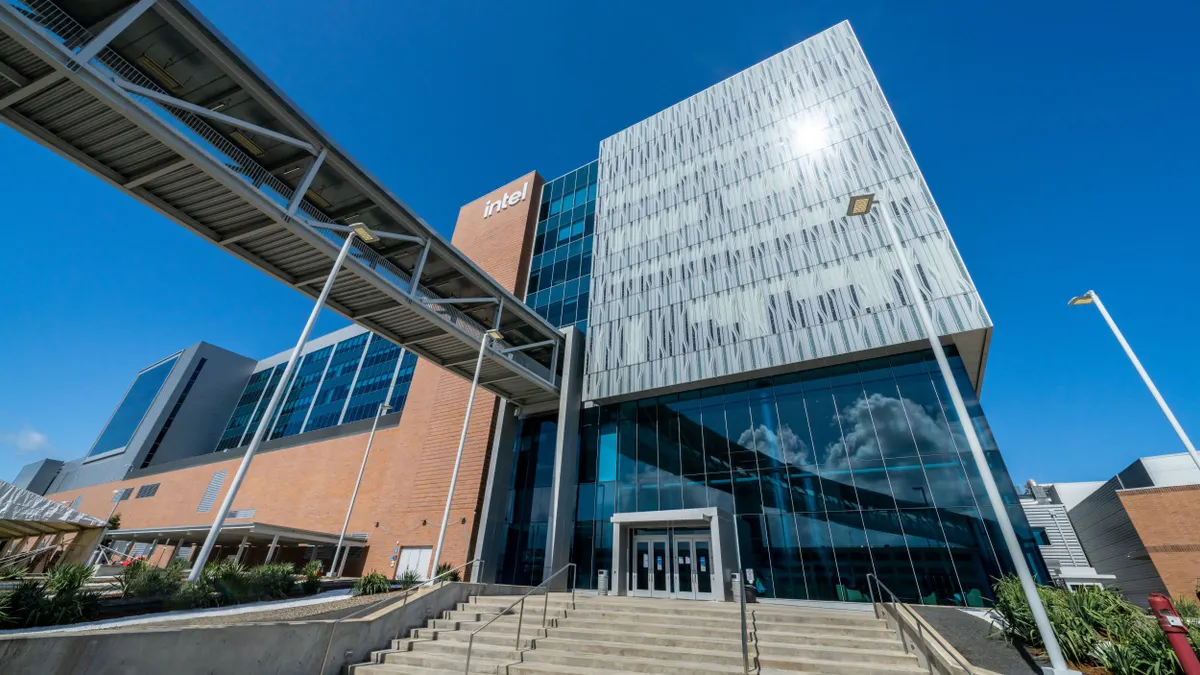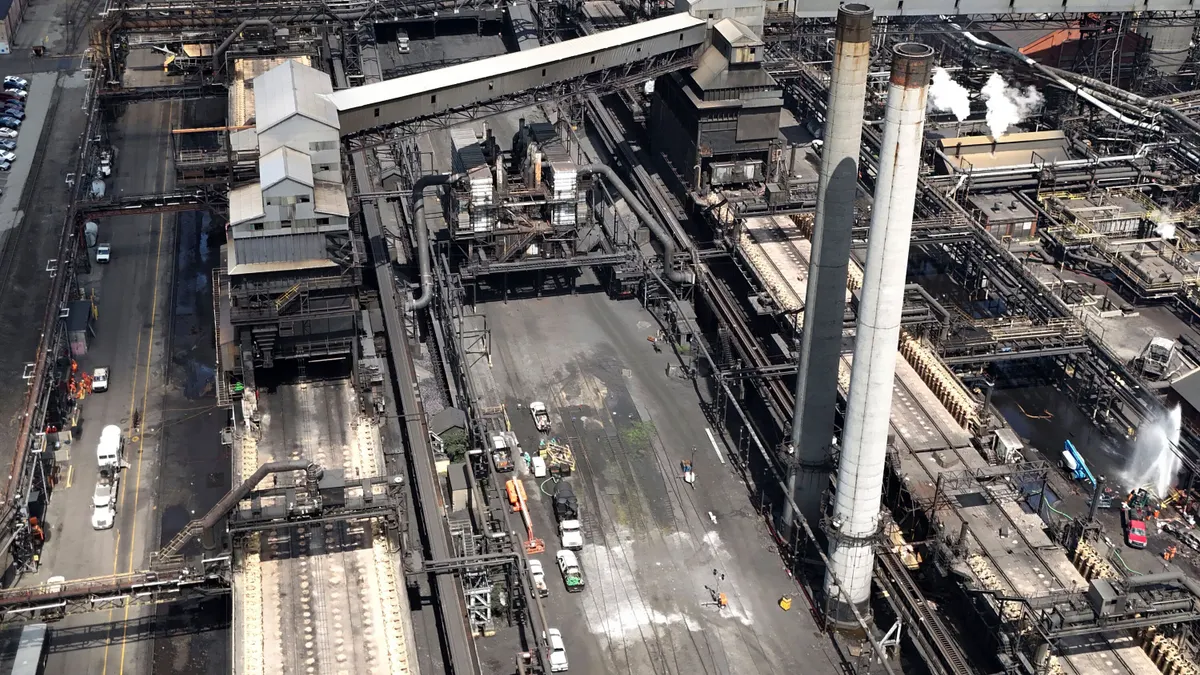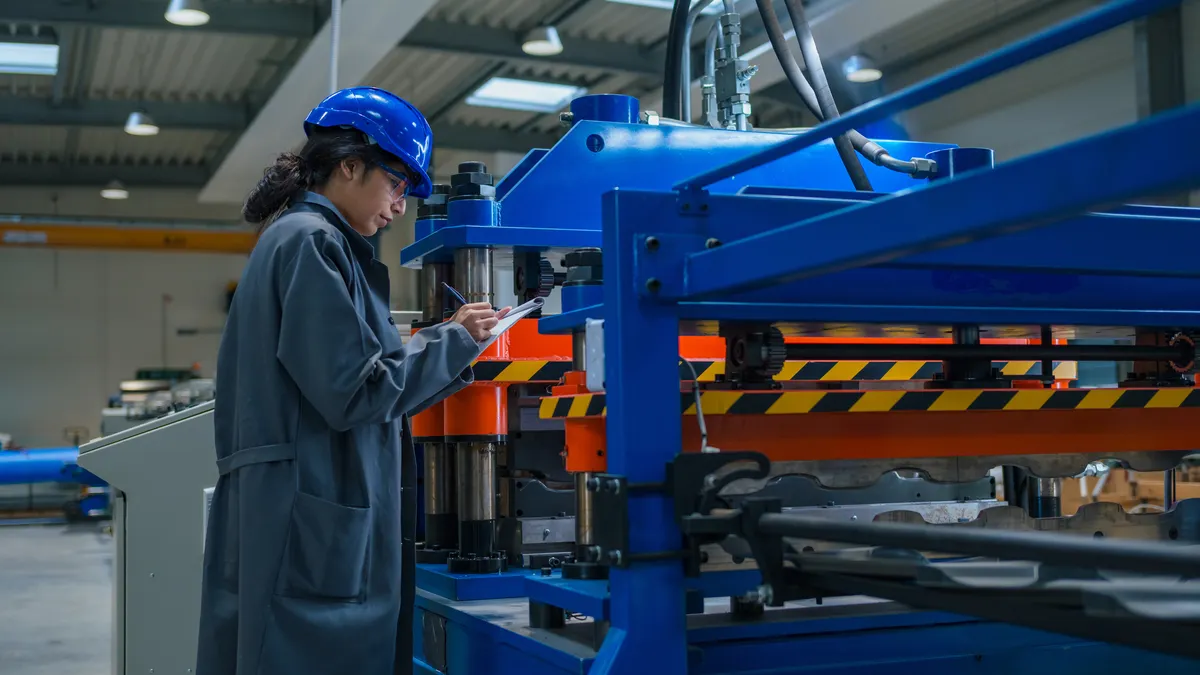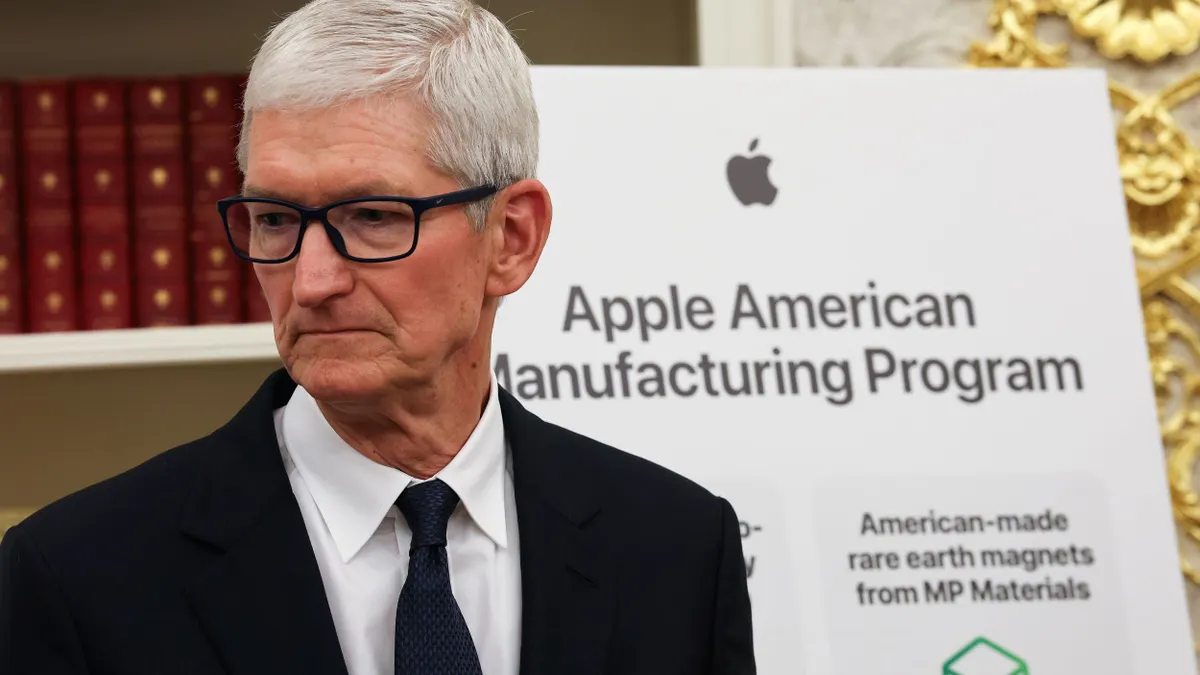Recognizing academia’s role in shoring up domestic talent for manufacturing, one of the largest U.S. universities has opened a school specializing in the discipline.
Arizona State University’s School of Manufacturing Systems and Networks, which launched in October, will prepare students for a career in an industry that now demands high-level data analysis and technological expertise.
“The new manufacturing has significant computing, significant automation, significant needs that go beyond just using a tool,” said Binil Starly, the school’s inaugural director.
The program has elevated manufacturing from within ASU’s massive engineering school, and its launch highlights the increasing number of careers available to students as the U.S. works to reshore manufacturing.
Demand for the new degree has returned after a roughly 20- to 30-year decline in domestic manufacturing operations that might have given parents pause about their children entering the industry, Starly said.
“No parents ... actually know what career pathways do exist now,” the director said. “Many people think it’s the old kind of manufacturing. But it’s not.”
Catering to the local industry
Already, ASU is situated as a potential talent pipeline for major players in the semiconductor industry such as Intel and Apple supplier TSMC that have embarked on projects in Arizona over the past few years.
The university has one of the largest engineering programs in the country with around 30,000 students. Part of launching a concentrated manufacturing school is the opportunity to “redefine what a manufacturing curriculum needs to be” to cater to the needs of the local industry, Starly said.
Although chip companies are investing in highly automated facilities, they still require operators and advanced technicians to run them.
Options to help fill jobs in the state’s developing manufacturing industry include aligning curriculum standards with companies’ trainings to expedite onboarding of engineers or technicians, Starly said. Another is to help to establish a pathway for K-12, community college students and working professionals who want to pursue a higher degree.
Bridging the digital skills gap
Manufacturers across many industries also stand to benefit from the new ASU school and others like it graduating digitally savvy recruits.
Germany-based Bosch is one manufacturer that has relied on education to cultivate a long-term workforce near its operations in Charleston, South Carolina. The company has invested over $2.5 million in grants related to STEM education efforts in the area over the past decade.
“Previously, when someone had to fix something on the manufacturing floor, you probably walk up with a tool box,” said Tim Weiland, director of corporate communications for Bosch North America. “Now, you walk up with a laptop ... and make your decision on what needs to be done based off of data.”
As manufacturers continue digitizing their operations, workers with more digital skills are needed. More than half a million jobs have remained unfilled in the industry since 2021, which is projected to rise to 2.1 million if the skills gap persists.
ASU’s new curriculum brings with it a significant opportunity to impart digital literacy and computing literacy for manufacturing engineers at all degree levels, Starly said.
While manufacturing engineers are trained in the processes involved in making a product, many products today are digitally created first – both from a design and manufacturing perspective, he explained. As a result, familiarizing manufacturing engineers with programming, to expand their knowledge of making a product to use computing skills to analyze it, is a significant part of the curriculum.
Another key is teaching students how to integrate automation.
“Many companies have also recognized that if we are going to reshore manufacturing to the U.S., industrial automation [and] robots is going to be a critical role,” Starly said.
Revamping the curriculum
Given ASU’s significant online presence, the next challenge for the School of Manufacturing Systems and Networks will be navigating how to impart a hands-on manufacturing education online.
The school is figuring out how to create digital environment in which students don’t have to be located in Arizona to get the same learning experience, Starly said. He sees significant opportunities in using extended reality technologies, but incorporating it in manufacturing education comes with challenges.
“It’s an opportunity that I think in the next one or two years, we are going to revamp our curriculum [to enable] students from anywhere to be able to access manufacturing content.”



